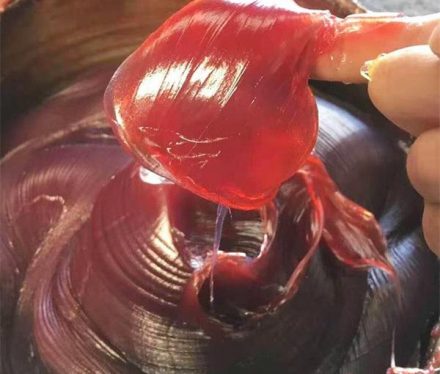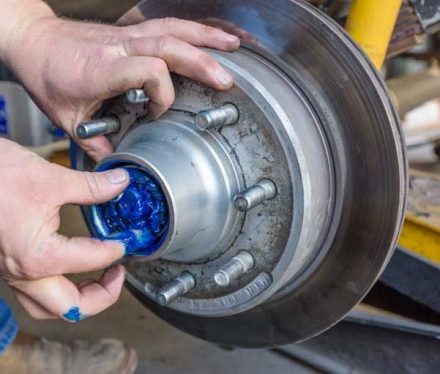

With the continuous development of grease manufacturing technology, the variety of greases has also increased rapidly. The basis for the classification of greases mainly includes two aspects: one is to specifically determine the consistency of the grease, that is, to distinguish the grades; the other is to classify the types of grease in detail.
(1) Classified by grease consistency grade
1. Grease penetration
Consistency refers to the degree of softness and hardness of the grease, and its size is measured by the working cone penetration. Grease penetration value (also called penetration value) is the depth of a standard cone of a specified quality into the grease sample under the specified time and temperature conditions, with a unit of 1/10mm. The general test temperature is 25°C, the time is 5s, and an obtuse-angled metal tip cone is used. The greater the penetration value of the grease, the smaller the consistency and the softer appearance. On the contrary, the appearance is harder.


2. Consistency grade
According to the working range, the grease is divided into different consistency grades. The current international consistency grade is first proposed by the American Lubricating Grease Association (NLGI), also known as the NLGI consistency classification. Although the consistency of some greases is not completely limited to the specified range, this consistency series reflects the consistency of most grease brands.
The NLGI consistency classification divides grease from 000 to 6 into 9 grades, and the difference in penetration between each grade is 15 units. Among them, 0#, 00#, 000# grease is called semi-fluid grease, which is mainly used for the lubrication of bearings, gears and various friction parts that are not suitable for lubricating oil.
(2) Classified according to the type of thickener
According to different thickeners of grease, it can be divided into soap-based and non-soap-based grease. Among them, soap-based grease can be divided into single soap-based grease, mixed soap-based grease, composite soap-based grease, etc. Non-soap-based greases include hydrocarbon-based grease, organic thickener grease, and inorganic thickener grease, etc. .
(3) Classification according to the purpose of grease
According to the different purposes of the grease, it can be classified into anti-friction grease, protective grease, sealing grease and friction-increasing grease. Each of these categories can be further subdivided according to whether it is special purpose, use temperature, etc.
Among them, friction-increasing grease is a smaller branch. For example, the mining friction wheel hoist must rely on the transmission power of the wheel, the liner and the rope to achieve the purpose of lifting, and the coal mine safety regulations put forward mandatory requirements for this. In addition, the elevator rope also has the effect of increasing friction.
(4) Classification of domestic synthetic grease
The classification of domestic synthetic lubricating grease is a 4-digit Arabic number to indicate a product. Those starting with "4" are oils, and those starting with "7" are lipids. The second digit indicates the purpose, and the last two digits indicate the serial number of the product.
(5) Other classification methods
Classified by industry: such as military grease, railway grease, ship grease, automotive grease, textile grease, mining grease, chemical grease, etc.;
Classified by application equipment and location: valve grease, bearing grease, reducer grease, etc.;
Classified by operating temperature: low temperature grease, high temperature grease, etc.;
Classified by load-bearing performance: ordinary grease, extreme pressure grease, etc.


On August 21, 2023, MIMSAutomobility Moscow will be grandly opened at the Moscow Ruby Exhibition Center. The exhibition is a professional event with the highest degree of internationalization, the largest scale and the widest range of products in the automotive industry in Russia and the CIS region. In 2022, MIMS has an exhibition area of…
06
2023.07

Grease is mainly composed of base oil, thickener, and additives. Generally, the content of thickener is about 10% – 20%, the content of base oil is about…
26
2021.11

Too much grease will increase the friction torque, temperature increase, then grease consumption become large. However….
26
2021.11
Submit Request